How to Play Chess With Cards
Get It Fast. Watch the Videos.
-

-

-

-
One Set.
Many Ways
to Play.
This page contains some of the most popular ways to play Chess With Cards. Remember, you can use the Cards in whatever way works best for you. Share your ideas with us, and we’ll publish them here for the whole community!
The Original Rules
Purpose of the Game
The goal is to win the chess game on the board as usual. The difference is that you can use pattern-recognition cards to help find the best plans and, optionally, to undo moves or restore captured pieces.
Getting the Cards Ready
When you first unpack the cards, do the following:
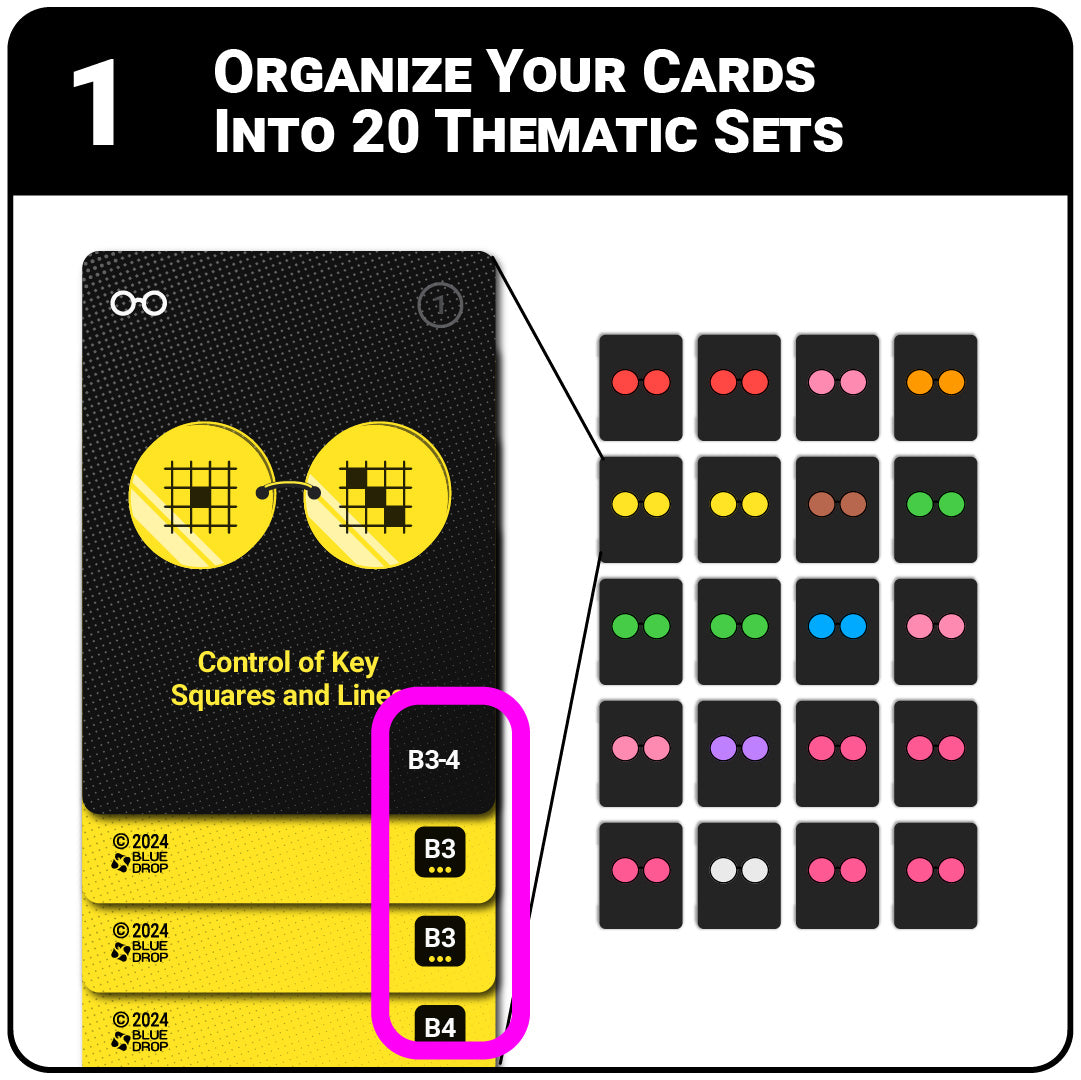
Organize Your Cards into 20 Thematic Sets called "Strategic Glasses". Place each Glasses Card on top of its corresponding Pattern Cards. Example: Group the Glasses Card titled "Control of Key Squares and Lines" (marked "B3-4") with all Pattern Cards labeled "B3" or "B4."

Combine the 20 Sets into 5 Decks. Group the Strategic Glasses into 5 decks to make finding patterns easier. Use the number in the top right of each Glasses Card as a guide (a circled number means that card stays on top):
1. Pawns: Condition of Pawns + Condition of Passed Pawns + Pawn Techniques + Type of Endgame + Type of Opening
2. Squares: Control of Key Squares and Lines + Control of Center and of Space.
3. Pieces: Condition of Knights and Bishops + Condition of Rooks and Queens + Differences in Material + Condition of Kings + Development and Initiative + Knight, Bishop and Rook Techniques + King Techniques.
4. Tactics: Tactical Signals and Clues + One-Line Tactics + One-Idea Tactics + Sacrifices + Body and Mind
5. Checkmates: Checkmate Patterns
Get to know the cards. They show many chess patterns, some simple, some complex. You don’t need to memorize them all; just use them as your skills grow.
Playing Someone New to the Cards
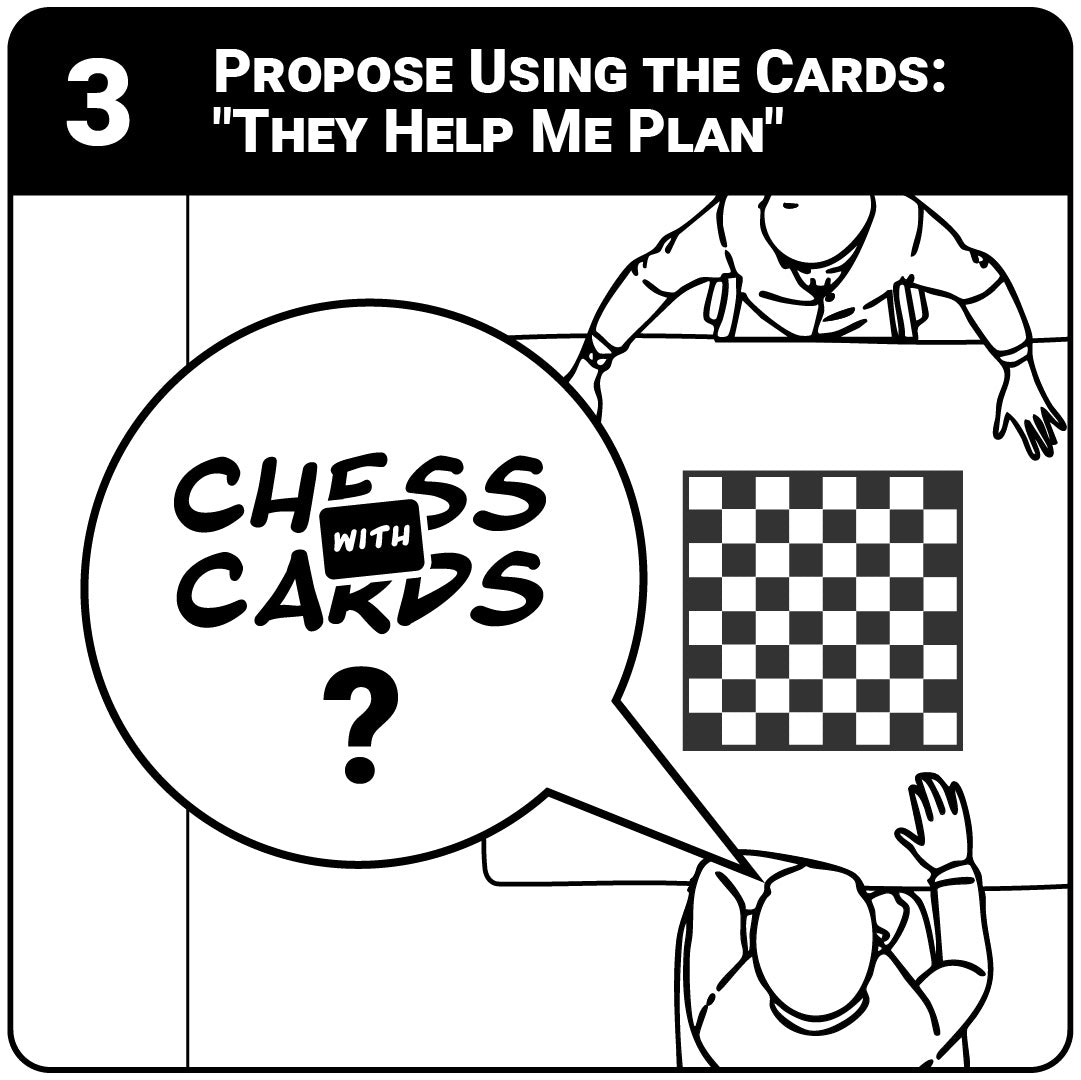
Stronger / Equal Opponent:
“Mind if I use the cards? They help me find good plans. Also, I'm sure I can learn a lot from how you see the board.”
Beginner / Weaker Opponent:
“Let’s use the cards together so I can show you some cool patterns as we play!”
How it works:
“We play normal chess, but we talk as we go and use these cards to spot patterns. When we spot a named pattern, we show it on the board, grab the card, and keep it. You’ll get the hang of it as we play!"
Before You Start a New Game
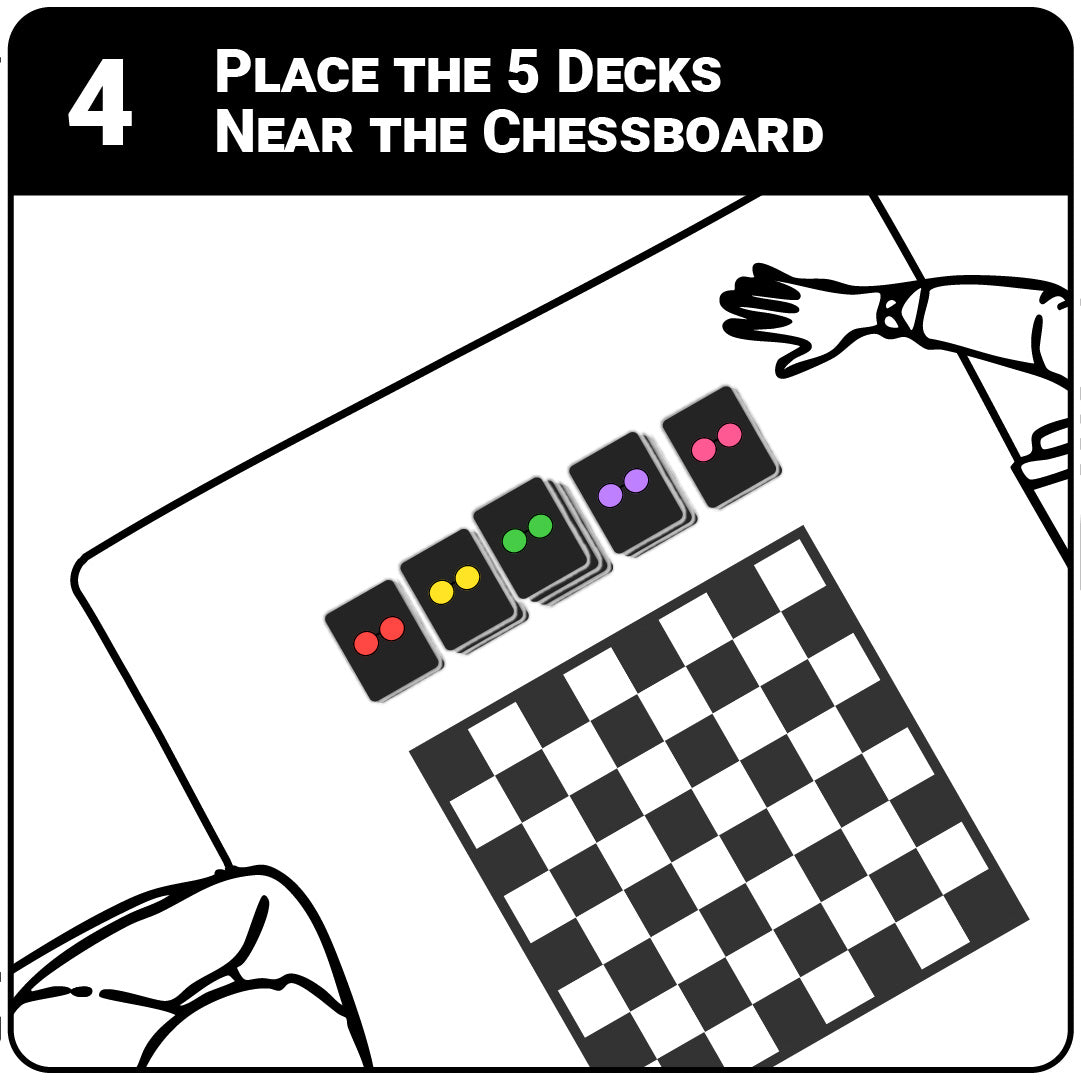
Place the 5 decks by the board (see "Getting the Cards Ready" if needed).
Decide with your opponent if you’ll use the Take-Back or Extra-Life rules.
When you Spot a Pattern

When you see a relevant pattern on the board, grab the matching card from the appropriate deck and read aloud the phrase on the card’s face. Adjust the wording to fit the position. For example:
“Your pawn on [c6] is a backward pawn” → “My pawn on d4 is a backward pawn”
“I could skewer your Queen and Rook” → “...your Rook and King”
“I could sacrifice my Queen on [h8]” → “You could sacrifice your Queen on f6”
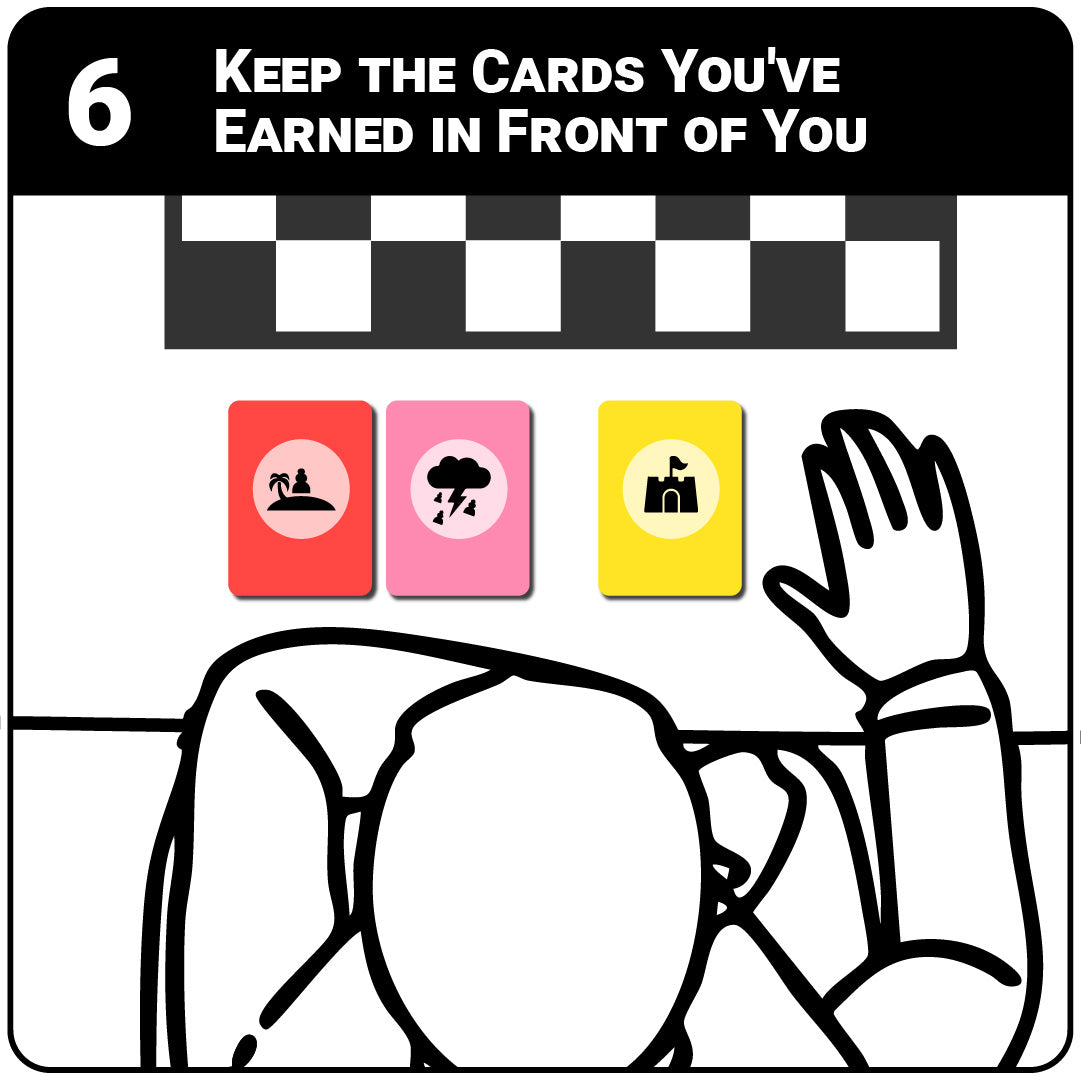
You can now place the card face down on your side — you’ve earned it. If you're using any of the optional rules below, you can spend it whenever you like, even immediately.
After the game, you and your opponent can revisit the cards in order — they tell the story of how the game unfolded in your minds. Each card marks a key moment: a plan you made, a chance you missed, or a turning point you didn’t see coming. Walking through them helps you retrace your thinking, compare ideas, and learn together.
If Your Opponent Disagrees
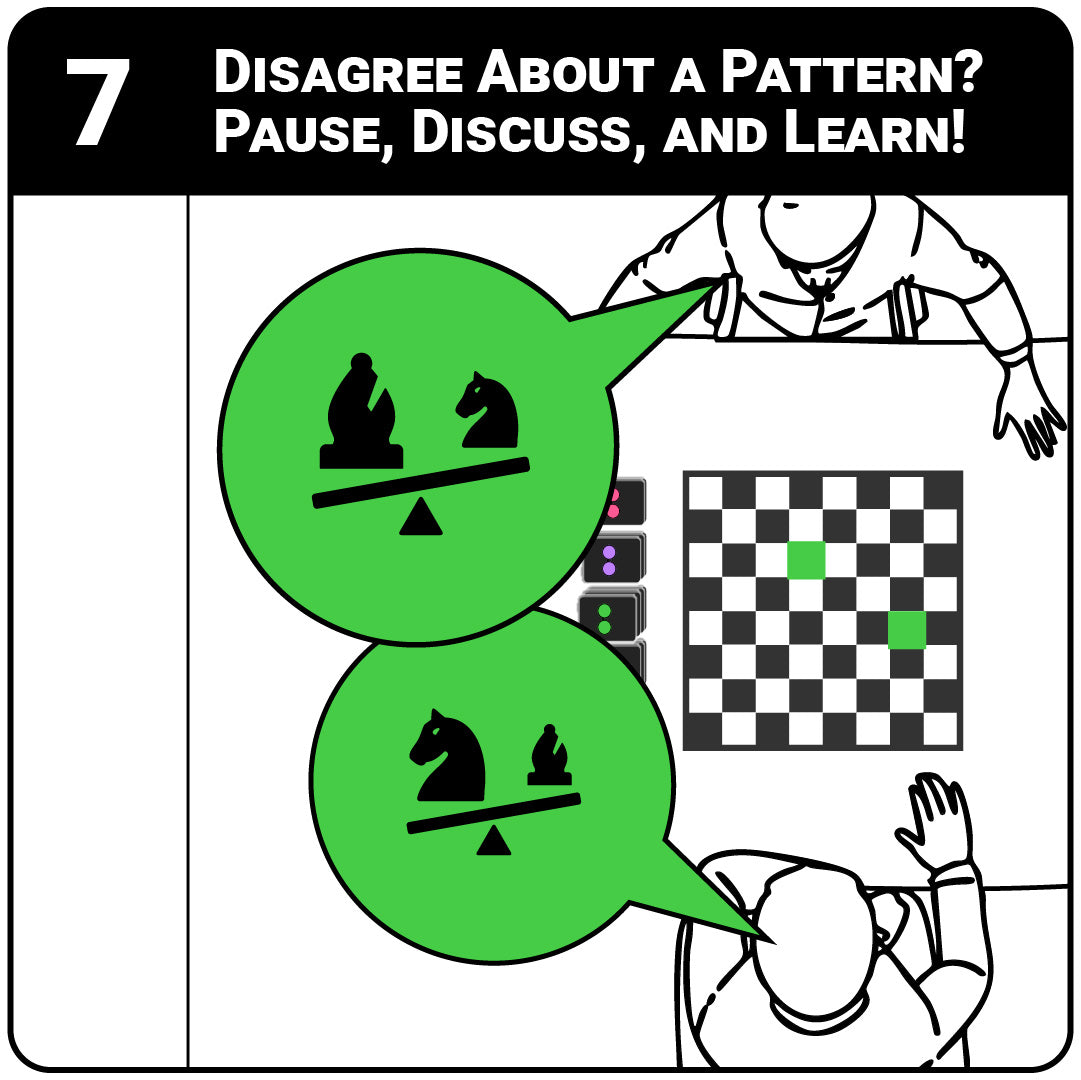
When you name a pattern, your opponent can challenge it by saying the pattern is irrelevant, unclear, or simply wrong. Pause the clock and take your time to discuss it — this is when playing Chess With Cards really helps both players learn from each other!
Basically, you can earn a card if the position on the board allows you to say aloud the words written on the card's face (see above for adaptations). If you're unsure about the pattern, scan the QR code to access helpful content related to it.
Sometimes, the card’s wording might technically fit the position, but the pattern itself is irrelevant — meaning it does not influence the next moves or overall strategies. For example:
- On move 1: “Your king is still in the center.”
- On move 2: “Your a1-rook is undefended.”
- In the middle of heavy trades: “I am up material.”
In cases like these, the card can't be kept.
If you and your opponent can’t reach an agreement, just return the card to its deck. No worries — even experienced players struggle sometimes! Reaching shared objectivity in chess is part of the challenge (and the fun).
Want to Undo a Move? (The Optional Take-Back Rule)
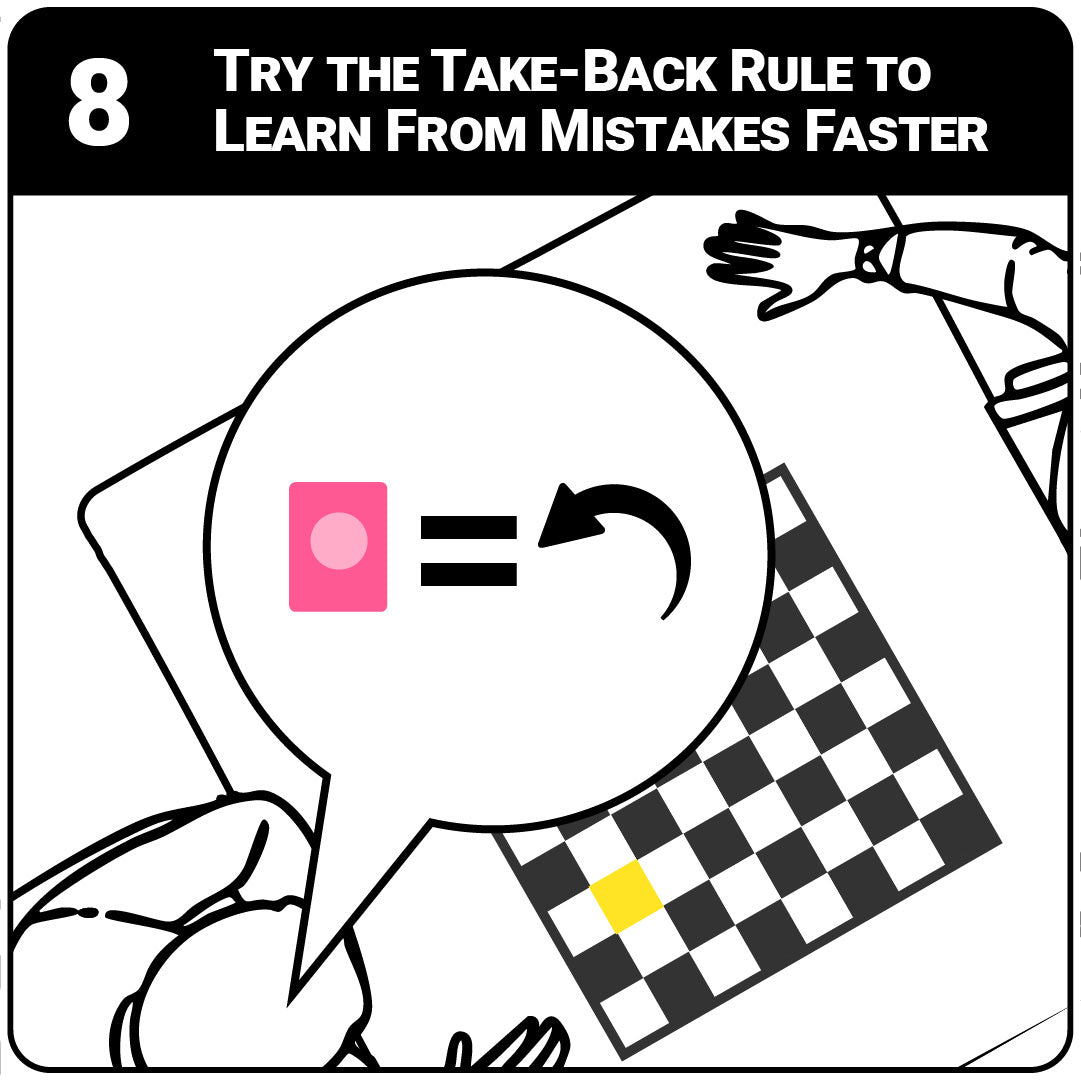
No one likes losing a great game to one bad move. With the optional Take-Back Rule, you can fix mistakes — not as a favor, but as a reward you've earned!
At the start, agree with your opponent to allow take-backs. During your turn, you can flip one or more of your earned cards — one per move — to undo your own previous moves. Pause the clock, rewind the board together, and make a new move. Then restart the clock and keep playing — no hard feelings.
Want to Bring a Piece Back? (The Optional Extra-Life Rule)
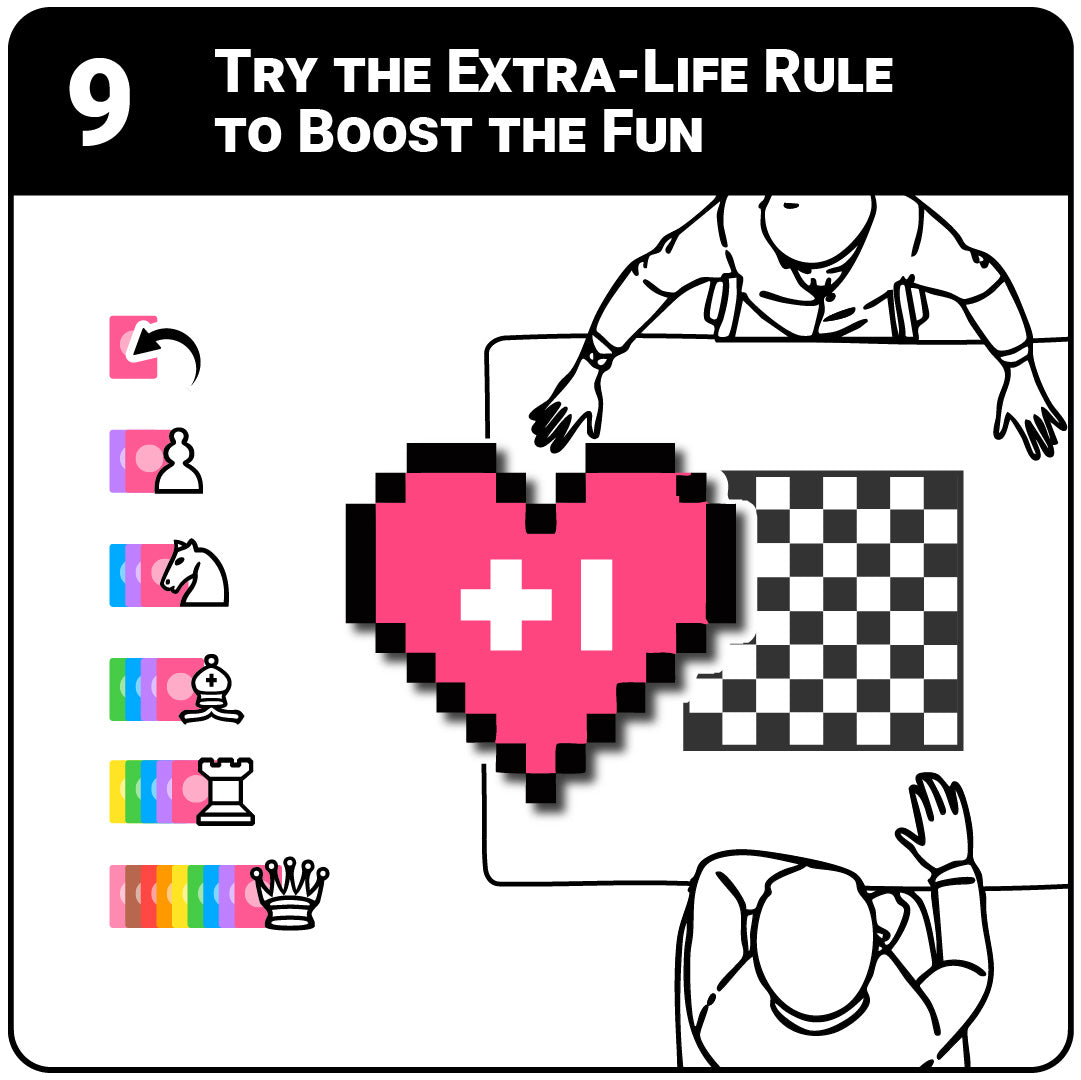
The Extra-Life Rule helps balance matches between players of different skill levels and creates opportunities for dramatic comebacks. By spending earned cards, players can bring captured pieces back onto the board and shift the momentum of the game
Before you start, decide with your opponent how you want to use the rule. If you're playing against a stronger opponent, you might allow only yourself to use it. If you're facing a weaker player, you can offer it to them to help keep the game competitive. If you're evenly matched, allowing both players to use it adds an exciting, unpredictable dynamic full of twists.
During the game, at the start of your turn, you can flip over some of your earned cards to recover one of your captured pieces (Pawn: 2 cards, Knight: 3, light-squared Bishop: 4, dark-squared Bishop: 4, Rook: 5, Queen: 9).
Tell your opponent which piece you want back. They will place it on one of its original starting squares. For example, a White Bishop on f1, a Black Rook on a8 or h8, or a White Pawn anywhere on the second rank. If none of the starting squares are available, you lose the cards and don't recover the piece. Timing matters. Your opponent might place the returned piece in a way that blocks your pieces or exposes you to an attack, so choose carefully.
After the piece is placed, your turn continues as normal.
The Extra-Life Rule keeps games alive longer, rewards smart timing, and leads to some very memorable battles.
That's all for the rules. Have fun!
Variant #1 | Focused In-Game Training

How to Play
In this variant, you create a "Focus Deck" by selecting just a few patterns to work on and setting the rest of the cards aside. Play normally, but when a card is spent, it goes back into the Focus Deck instead of being discarded — meaning you can reuse key patterns throughout the game.
Why Play Chess With Cards in this Way
This variant allows players to focus on a particular skill at a time. It is ideal for when the players want to train on a specific aspect of the game. Some examples:
Example 1. Two friends want to focus on spotting tactics. In this case the Focus Deck might include the "D2", "E1", "E2", and "E3" cards (Signals and Clues, Tactical Patterns)
Example 2. A trainer wants to help a beginner learn to avoid blunders by continuously looking for tactical "signals" (undefended pieces, overloaded defenders, alignments, etc). In this case, the Focus Deck might include just the "D2" cards (Signals and Clues)
Example 3. A parent wants to teach his kid how to identify the most common types of pawns and how to build plans around them. In this case the Focus Deck might include just the "A2", "A3", and "A4" cards (Types of Pawns).
Variant #2 | The Two Spotters

How to Play
This team-based variant puts a twist on the original rules. Two teams, each made up of a Player and a Spotter, face off. The Player plays the chess game as usual. The spotter observes the position and follows the original rules, with one major difference: they are responsible for identifying patterns and commenting on them.
Why Play Chess With Cards in this Way
This variant makes games more dynamic and social. Stronger players spot patterns and share insights, helping teammates notice key ideas without giving direct advice. It keeps the competition lively, sharpens instincts, and adds an extra layer of fun for everyone involved.
Variant #3 | [...]
Waiting for Your Suggestions!
Remember: send your ideas to us. We'll publish them in here for the whole community!



